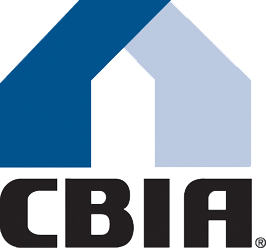By Ali Sahabi of Optimum Group, LLC
President, Building Industry Association (BIA) Baldy View Chapter
One of the most vexing details home sellers encounter is dealing with the accumulation of possessions they have acquired over the years. So, if you are going to be selling your home, consider one of the easiest – and most profitable – ways of dealing with these accumulations: the good old-fashioned garage sale.
When preparing a home for sale, real estate professionals encourage home sellers to remove all but the essentials they need to allow potential home buyers to see the home as their new home rather than somebody’s old home. Home sellers are also encouraged to store nonessential items because a clean, spacious garage and clean closets will prove to be major selling points. Public storage facilities are a terrific option for temporary or long-term storage options, however they do cost money. Local charities are also good options for eliminating non-essential possessions but are often selective in their choices of what items they will accept. Likewise, landfills are careful about what kinds of items they will accept and many modern items such as old computers and appliances must be taken to designated recycling facilities.
So if you are planning to sell a home in the near or distant future and have items that you will never use again, garage sales are a great way to dispose of unwanted household items and generate some additional funds to cover moving expenses. Not only will a garage sale save you from packing items or clothes you haven’t touched in years, but will save time and money because professional movers often charge by the size of the load they are transporting.
The most important step in conducting a successful garage sale is to check with your local city government to see if your community requires permits for garage sales. Generally you can simply visit your city’s website to find out what necessary steps must be taken to obtain one.
Utilizing social media platforms can go a long way towards getting your message out, but the old fashioned way is still the most effective: signs. Check with your local government and homeowner’s association to see if you are allowed to hang signs on telephone poles, light posts or street signs to advertise the sale. Many communities have regulations for how far in advance you can hang signs, how big they are allowed to be and when they need to be removed. If signs are allowed, make clear, readable signs that includes the times, dates and address of the sale, and attach them securely. You might want to laminate the signs to protect them from the effects of rain or other inclement weather.
Once you are in compliance with all necessary laws, rules or regulations go through your entire house and inventory all possible sales items. Organize things into groups of what you think might have value to someone else and could sell, or what is in good condition but should be given away and what is no longer useful to anyone in your family or circle of friends.
Advertise your sale in your local newspaper or post information about your sale on online classifieds website where people can list items for sale for free. Look into other opportunities to promote your sale online such as community blogs. Let your friends know about it on social media. Post a status about your garage sale on Facebook and upload picture of key items to advertise to your friends what sorts of things you are selling. Post a tweet advertising what, where and when your garage sale is to let your friends know when they should stop by.
On the day of the event, start early on a weekend morning. Bargain hunters hit the streets early and you'll miss out on possible sales if you set up late. Mark prices clearly on all items and price things reasonably. Remember, your objective is to get rid of things and make a little money, not to score big profits. Place all similar items together and make sure all sets are complete and contained in bags.
Then, have plenty of quarters and dollar bills on hand to make change and plastic bags and newspapers to wrap purchases.
After the sale, contact local charities to donate the unsold items and other things you've marked to give away. Remember to get a receipt from the charity so you can deduct the donation on your income taxes.
On moving day, you'll be grateful for the extra work you did ahead of time. And when you move into your new house, you'll be pleasantly surprised at all the storage space you have.

































